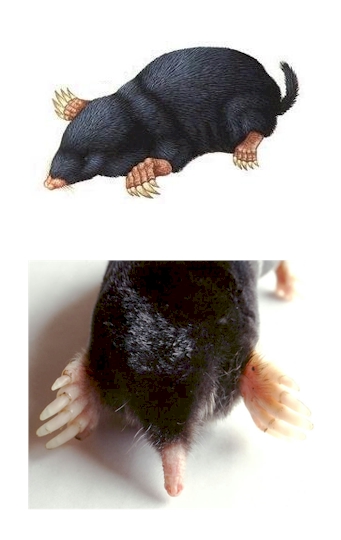- Home
- About Us
- Services
- Pest Control
- Mosquito Control
- Locations
- View Map
- Atlantic Beach, NC
- Cary, NC
- Chapel Hill, NC
- Charleston, SC
- Charlotte, NC
- Durham, NC
- Fayetteville, NC
- Georgetown, SC
- Greensboro, NC
- Hilton Head, SC
- Myrtle Beach, SC
- New Bern, NC
- Pawley’s Island, NC
- Pinehurst, NC
- Raleigh, NC
- Rocky Mount, NC
- Southern Pines, NC
- Topsail Beach, NC
- Wilmington, NC
- Wilson, NC
- Winston Salem, NC
- Contact Us
Learn about Moles
 Moles are primitive mammals belonging to the order Insectivora, meaning insect-eaters. They can undermine plant roots, indirectly causing damage or death to the plants. They can burrow lawns, raising molehills, giving the lawn an unpleasant appearance or even killing it entirely. All of these are traits which sometimes causes moles to be considered pests. In many places, such as North Carolina, moles are considered a protected species.
Moles are primitive mammals belonging to the order Insectivora, meaning insect-eaters. They can undermine plant roots, indirectly causing damage or death to the plants. They can burrow lawns, raising molehills, giving the lawn an unpleasant appearance or even killing it entirely. All of these are traits which sometimes causes moles to be considered pests. In many places, such as North Carolina, moles are considered a protected species.
Moles live most of their lives in what are called “underground runways.” These major runways can be found anywhere from 6 to 20 inches underground and, in heavily infested areas, form a vast interconnecting network of tunnels. Moles dig these runways to search for food and to provide protection for themselves as well as a living space for travel, resting, and nesting. The presence of moles is most obvious when they dig shallow runways in a search for food immediately under the surface of the lawn. These “feeder” offshoots are usually used once and then abandoned.
There are several ways to control mole populations in a lawn, some of which involve driving moles away by eliminating their food supply. If moles are deprived of their food supply, they will abandon an area. There are several insecticides (both organic and otherwise) that are capable of reducing the population of earthworms, grubs, and soil insects in a lawn to a point where the soil no longer provides sufficient food supply to fulfill a mole’s daily requirements. (The effect on the moles cannot be expected for several weeks following treatment.) This method has the added advantage of, not only getting rid of the moles in turf areas, but also ridding the lawn of harmful insects and larvae that may destroy the grass.


